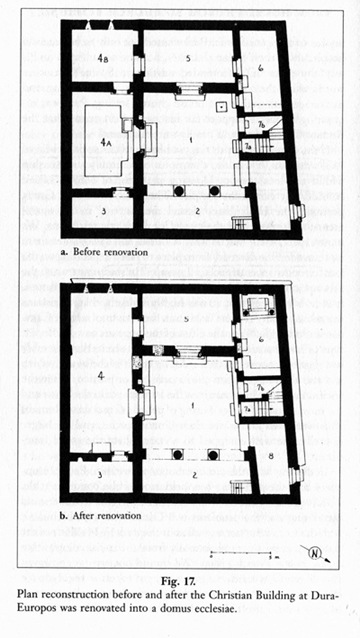|
When we look at early Christian buildings and
Jewish synagogues, we will focus on the process of
architectural adaptation. In the beginning, most Christian
groups met 'from house to house', sharing a common meal in
the dining rooms of families in their community. Remember
that some Roman cults also met in household cells, even when
they had built monumental temples. House churches are not
visible archaeologically until they have been renovated for
use in Christian worship. The renovated houses (sometimes
referred to as a domus ecclesiae) would not usually
have continued to be used as domiciles.
This plan shows a house unearthed in Dura
Europos that had been used as a place of Christian assembly.
You can see how a wall has been removed to make a long
assembly hall (no longer used for dining, but for seating
focused on the front of the hall, and still useful for the
symbolic meal, the eucharist). Note also the addition of a
baptistry.
|

